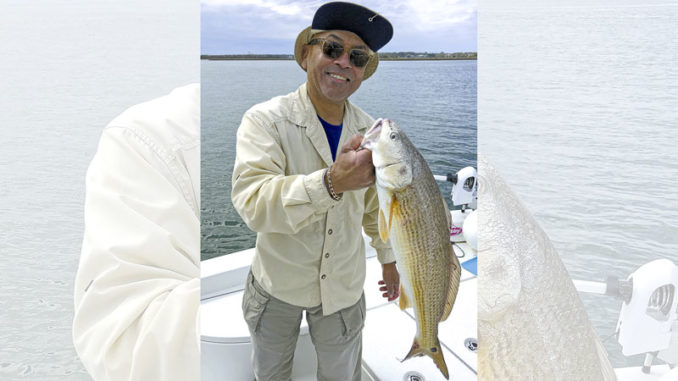
Redfish are going back to school this month
When daylight hours decrease during late October and November and the mercury begins to dip, guide Jot Owens of Wrightsville Beach, N.C., usually targets spotted seatrout.
But every so often, a client wants something different, so he changes out the line on his reel, ties on some different lures and goes hunting for red drum — lots of red drum.
“If you know where they’re likely to be, especially later in the month when the water temperature drops down toward 50 degrees, you can find schools of 20 to 200 fish,” said Owens, of Jot It Down Charters (910-233-4139). “It can be a lot of fun.”
Obviously, concentrations of reds offer exciting possibilities.
“If it’s late October, the first place I’ll look is shallow water, estuary creeks and along (marsh) grass lines where higher tides push reds up against the grass,” he said.
He’ll cast 3- to 4-inch Gulp! shrimp on 1/16-ounce swimbait hooks parallel to the marsh grass, as close as he can get.
“These weigh just enough to cast a good distance along the edges,” Owens said. “The idea is to let a lure sink slowly then hop them along the edges without snagging grass or letting them hit bottom. It’s not sight casting; the water’s usually so clear you can’t get close to the fish or they’ll spook.”
Two more places likely hold schools of red drum.
“When we get some cooler weather, good-sized groups of reds, slot and over-slot sizes, gather at the mouths of inlets,” he said. “That’s when you go up (in sizes) of lures to 5- and 6-inch Berkley Gulp! shads or 4-inch Gulp! shrimp with 3/8- to 3/4-ounce jigheads and 3/0 or 4/0 hooks.
“You want to cast lures where the current line meets the ‘dead’ water,” Owens said. “That’s where fish will be. It’s also usually better during tide changes.”
When fishing from a boat, Owens jigs lures from shallow to deep water. From the shoreline, it’s just the opposite.
Top lure colors include sugar spice/glow for shrimp imitators and chartreuse pepper/neon/fire tiger for shad lures.
“In mid- to late November, with temperatures in the low 60s and 50s, schools of redfish leave inlets for the surf,” he said. “When the ocean’s calm, you can fish the surf from the shore or a boat and see big numbers of redfish near inlets.”
For long casts in the ocean, Owens uses a 71/2-foot rod with a 2500 to 3000 size reel to throw 5-inch, 1/2-ounce Jerk Shads at redfish schools. Line is 15-pound Spiderwire braid with a 11/2 to 2 feet of 20-pound leader.
“It’s not like summer fishing when you (catch) one or two fish,” Owens said. “You’re either gonna catch six or 20 — or there’ll be no bite at all.”




Capt Jot always seems like a good guy with good rep
Yes, we agree, Capt. Jot is as good as it gets!